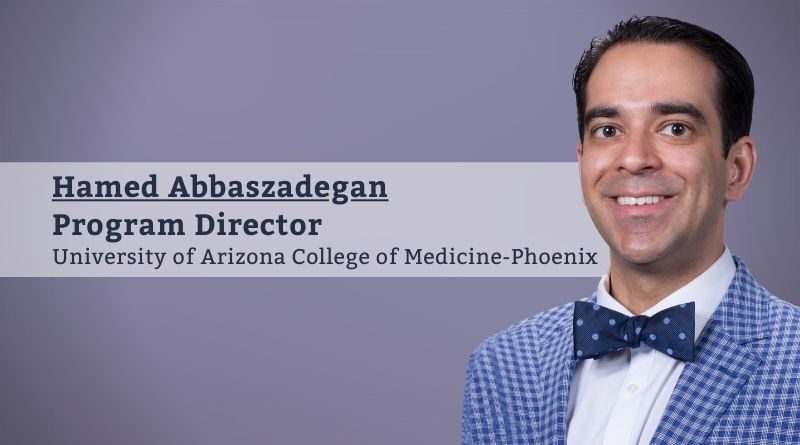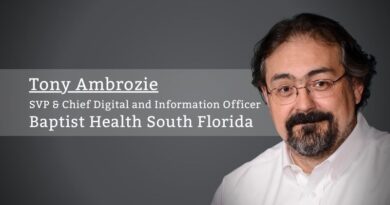NLP from an end-user perspective
By Hamed Abbaszadegan, MD, MBA, FACP, FAMIA, Program Director, Clinical Informatics Fellowship Program, University of Arizona College of Medicine-Phoenix
The word “surge” has become a negative connotation in our COVID environment. That is unless you refer to the term with regards to technology adoption. It has been widely demonstrated how the Health IT space has benefitted out of need due to the pandemic. Telehealth has been discussed at great length over the last few months, but one area of Health IT not as commonly reviewed is our old friend Natural Language Processing (NLP). NLP has been widely used for many years. Your Siri or Google Assist on your phone/device are all NLP based technologies. As all things healthcare though, applied technology seems to lag. NLP really has not taken a firm root in the practice of medicine. We have seen brilliance in voice recognition technology, but mainly in the documentation gathering applications. Voice recognition is used in NLP, but it is not NLP by itself. With that said, what has the COIVD surge accelerated in the domain of NLP? The answer (in my health system) is that COVID surges have caused surges in monitoring COVID.
From an informatics and Health IT perspective, NLP has proven to have clinical application for large scale surveillance (population health management).
The accelerated adoption of monitoring COVID itself has accelerated the need for robust NLP engines to capture patients who have tested positive or negative for COVID. From an Electronic Health Record perspective, tracking COVID cases within a health system is in essence basic Clinical Informatics 101. You can link the results of your lab package to easily track and create reports of COVID cases. This does not solve the cases outside of your lab package though. In order to scale up surveillance, something drastic had to be applied. Waiting on true interoperability seemingly will never happen, so the Department of Veterans Affairs created the National Surveillance Tool for COVID-19. Rather than go into technical specifics, I will just state that the NLP algorithms can pick up select text and language out of the basic typed text. Thus, we can search through our entire health record system across the country, regardless of the instance of the EHR to look for keywords to extract out patients that had COVID tests outside of our system.
In the case of the city of Phoenix, if you had a COVID test at a Banner Health facility, and were subsequently seen back at the VA through telehealth, documentation of your encounter (History of Present Illness – HPI) would include that you recently had a COVID test. Picking up that language in a non-structured free text HPI section of a note is what the NLP engine can do. By being able to isolate select language, a process of secondary clinical review is subsequently conducted to confirm COVID results. As all technology is not full proof, this process to have a clinician perform a secondary clinical review is critical to verify the NLP captured appropriate results. Thereis no other way to sift through hundreds of thousands of charts manually. No case is logged as positive without this clinical review. What makes this application of NLP so useful is we can target specific patients and specific facilities/cities where the patient resides. The patient, admission info (if applicable), location, primary care team, and primary care physician are all tracked for appropriate follow-up. The capability to hone in and get granular information is extraordinarily useful clinically. There are numerous other data points tracked that I have not mentioned due to the sensitive nature of the private/personal health (patient) information.
From an informatics and Health IT perspective, NLP has proven to have clinical application for large scale surveillance (population health management). There are many other uses of NLP for clinical tracking purposes. Cancer navigation is one such useful application. In fact, there are pockets of NLP use in the cancer tracking domain, but from my experience, it has not kicked into high gear yet. Adoption and the process of tracking has often been a rate-limiting step for cancer navigation.
Nevertheless, the lessons learned from the use of NLP for COVID tracking will likely extend out to cancer navigation and disease monitoring in a more robust form. Imagine being able to intelligently isolate out text with the words “nodule”, “Spiculated lesion” or “suspicious lesion” tied together with a process to do something about it. By tracking which patients have such language in their written notes at a massive scale will revolutionize how the clinical review of high-risk patients are prioritized for further precise healthcare deliver. As the surge of COVID has shown, the adoption of NLP will help all of us manage healthcare in a more precise manner.



